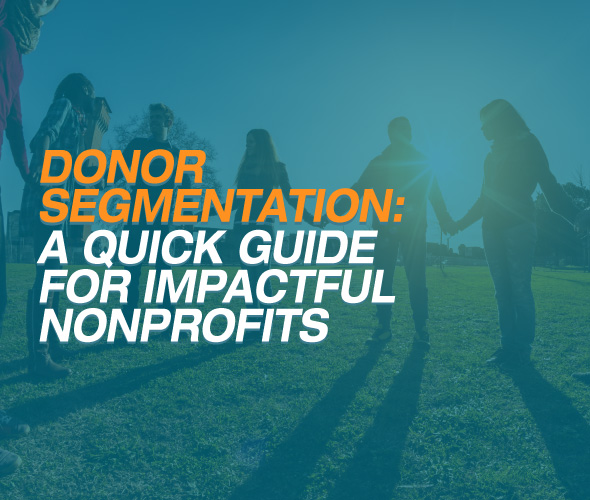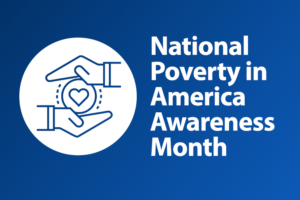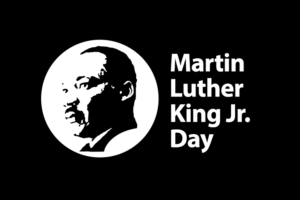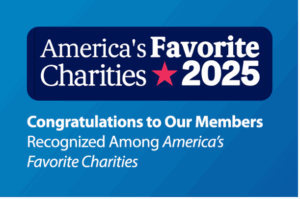Gerard Tonti of Salsa Labs | June 16, 2021
Donor Segmentation: A Quick Guide for Impactful Nonprofits
When it comes to fostering donor relationships, there’s nothing more important than showing people your nonprofit cares about their experience by taking the time to get to know them. A major part of this is diversifying your communication and fundraising strategies to reflect your supporters’ unique characteristics. However, it’s often not feasible to send individualized messages to each and every one of your donors. That’s where segmentation comes into play.
“Segmentation” refers to grouping your supporters based on shared characteristics (e.g. age, donation history, geographical area, etc.) Identifying these common characteristics empowers your team to gain a deeper understanding of donors and what drives them to give. In turn, your marketing and fundraising teams can send tailored messages that appeal to each group, ultimately driving more value for your nonprofit.

If you’re early on in your nonprofit career or just need a refresher, we’re here to help. At Salsa, we empower nonprofits with the tools needed to connect with donors and build lasting relationships. We understand the value that segmentation can bring to all organizations. This quick guide will cover everything you need to know about getting started with donor segmentation, including:
- The benefits of donor segmentation
- The main challenge of donor segmentation
- Best practices for effective segmentation
So long as you have a thorough understanding of this strategy and intuitive online fundraising tools, you’ll be equipped to establish healthy supporter relationships. Ready to cover the basics of segmentation and gather actionable tips along the way? Let’s dive in.
Is workplace giving part of your fundraising strategy? Workplace donors provide your cause with funding all year long, and they give on average five times more than individual donors. Learn more in this Washington Post article, “How workplace giving supports tangible change.”
The Benefits of Donor Segmentation
Regardless of your nonprofit’s mission, donor segmentation is an important strategy that can substantially strengthen your support system. It enables your organization to communicate with donors in meaningful ways. While useful for all-sized organizations, this strategy is especially crucial for larger nonprofits with thousands of supporters.
When leveraged effectively, donor segmentation enables your marketing and development teams to:
- Deliver meaningful content that appeals to donors’ interests.
- Reduce the number of irrelevant messages to donors who don’t belong to certain segments.
- Ask for feasible donation amounts based on giving patterns (i.e. donation amount, frequency, etc.)
- Offer relevant additional engagement opportunities outside of donating.
When you don’t segment your donors, you risk losing them. When someone donates, they shouldn’t be tossed into a generic email list where they’re bombarded with a bunch of information that doesn’t pertain to them. This can easily lead them to unsubscribe and stop supporting your nonprofit altogether, and there’s a high chance that they’ll take their support to a different organization that personalizes their experiences.
Studies have shown that as many as 94% of people who discontinued communications with a company did so because of irrelevant promotions or messages. Segmentation helps make your communications relevant, personal, and compelling.
The Main Challenge of Donor Segmentation
While segmentation has its benefits, it presents one major challenge that will work against your efforts: inaccurate data.
Inaccurate data can quickly derail your outreach and actually damage relationships rather than improve them. For instance, if you inaccurately record a supporter’s donation history, you may send a donation request that substantially exceeds their budget. Especially when they receive a lot of these appeals, your messages can come off as insensitive and may steer them away.
Maintaining an accurate database is crucial. As explained by AccuData’s guide to data hygiene, good hygiene involves addressing any “dirty data….containing errors, whether it’s outdated, incomplete, duplicated, or simply incorrect.”
Acting on any false information can have major costs; that same guide estimates that incorrect information costs organizations around $3.1 trillion a year in the U.S. alone.
The easiest way to maintain good data hygiene is to leverage the right constituent relationship management (CRM) system.
Your solution should automate data collection and pull data from all types of campaigns. When your fundraising and marketing software integrates with your nonprofit CRM, data collection is seamless. Everything will flow into a single system, eliminating manual entry and giving you a 360-degree view of your organization’s performance.
Even when you invest in a powerful CRM, it’s best to regularly clean up your data to ensure it’s as accurate as possible. So regularly check any data that looks out of line and address it quickly.
Best Practices for Effective Segmentation
While segmentation is certainly useful, it’s only effective when you apply best practices. With the right practices under your belt, your communication team will be able to quickly understand who they’re talking to, why they’re reaching out to them, and how to appeal to them.
Your segmentation can either improve donor retention or (when ineffective) drive valuable supporters away. Let’s walk through a few ways you can make the most of segmentation.
1. Create meaningful donor segments.
An initial step that you’ll need to take is to determine which donor segments make the most sense for your nonprofit. There are several ways to group your donors, each of which will require prospect research, and your team will need to think about which donor segments are relevant to your cause and which contexts they can be used in. Many nonprofits group donors by:
-
Giving history. You should be aware of how much and how frequently donors give. This will help you time your appeals and ask for the appropriate donation amount. Another point you’ll want to consider is if they’re a first-time donor or a returning donor. First-time donors often need extra support and outreach than repeat donors.
-
Preferred communication methods. An appeal may be fully optimized to convert but go unnoticed because you didn’t contact the donor using the right platform. You can segment donors based on how they prefer to be contacted, whether it’s via email, phone call, direct mail, or some other means. It can also be worthwhile to consider how often they’d like to hear from you.
-
How they were acquired. It’s crucial to know where each donor initially came from so you can make relevant appeals down the road. Common examples of this include your nonprofit’s website, social media, and events. There are many other ones to consider, though. For instance, they may have originally been a volunteer that converted to a donor.
Salsa’s guide to the best fundraising strategies for nonprofits explains that your team should track additional information beyond this. Your donor management software should also store valuable information like relationships (whether familial, business, etc.), demographics, interests, and biographical information.

Using segments like these, you can send out optimized communications that are more likely to encourage recipients to convert. For instance, you may choose to send a targeted fundraising ask based on a donor’s current giving level. In this case, it would make more sense to send out appeals based on giving history, rather than their communication preferences.
What do companies want from their nonprofit partners? Access the free report, America’s Charities Snapshot Nonprofit Research, to find out this answer and more.
2. Deliver tailored fundraising asks.
We’ve briefly touched on the idea that segmenting your donor data allows you to deliver customized appeals. If your development team frequently sends generic appeals to your entire contact list, that’s a good way to drive them away from your cause.
Like we said early on, your donors want to feel your nonprofit cares about their experiences enough that you took the time to understand their preferences. Here are a few ways your team can tailor fundraising to fit different segments:
-
Take their preferred giving methods into account. Tailor your asks to segments that prefer to give using a certain platform. For instance, a technologically inclined audience is much more likely to give if you send them online giving opportunities as opposed to sending direct mail appeals.
-
Offer other engagement opportunities. What other activities have your donors participated in? For instance, maybe they regularly attend events or volunteer. Knowing this, your team can invite them to your next event or share an upcoming volunteer opportunity. That way, they can become more involved with other activities in addition to donating.
When you leverage your segments in smart ways, you can truly connect with donors and drive them to give. Each donor will receive appeals, invitations, and other opportunities that adhere to their specific interests.
3. Promote corporate philanthropy to the right donors.
After donors’ data flows into your nonprofit CRM, you can group them based on their corporate philanthropy eligibility. All sorts of businesses have a corporate social responsibility (CSR) strategy. Frequently, these include matching gift programs that can dramatically boost your organization’s fundraising potential. Here’s how this corporate social responsibility guide defines matching gifts:
“Matching gifts are a type of corporate philanthropy in which companies match donations that their employees make to nonprofit organizations.
When an employee makes a donation, they’ll request the matching gift from their employer, who then makes their own donation. Companies usually match donations at a 1:1 ratio, but some will match at a 2:1, 3:1, or even a 4:1 ratio.”
Some sources estimate that these opportunities generate $4-$7 billion for the nonprofit sector each year. Understanding your donors’ eligibility allows you to market the opportunity to the right individuals and secure any unclaimed fundraising dollars.
Be sure to capture employer data during the giving process. Your team can go into your CRM and flag everyone’s eligibility by searching a database like Double the Donation. Alternatively, use an integrated prospect research tool to automatically flag certain corporate affiliations.
Access a discount on Double the Donation’s employee matching gift tools, exclusively for America’s Charities nonprofit members! Learn more here.
As we saw with the pandemic, the fundraising landscape can change drastically and without warning. As such, nonprofits should revisit their segmentation strategies to account for gaps and address evolving priorities. Regularly assess which segments you use and why. Doing so allows you to evaluate your segments’ performance and make adjustments.
When leveraged effectively, your donor segments can improve your fundraising tremendously. With all this in mind, how will you use your segments to strengthen your fundraising efforts and donor relationships?
About the author:
Gerard Tonti is the Senior Creative Developer at Salsa Labs, the premier fundraising software company for growth-focused nonprofits. Gerard’s marketing focus on content creation, conversion optimization and modern marketing technology helps him coach nonprofit development teams on digital fundraising best practices.

Get Resources and Insights Straight To Your Inbox
Explore More Articles
Congratulations to Our Members Recognized Among America’s Favorite Charities
Each year, The Chronicle of Philanthropy releases its list of America’s Favorite Charities—the 100 nonprofits that raise the most from individual donors, foundations, and corporate…
Read ArticleGet Resources and Insights Straight To Your Inbox
Receive our monthly/bi-monthly newsletter filled with information about causes, nonprofit impact, and topics important for corporate social responsibility and employee engagement professionals, including disaster response, workplace giving, matching gifts, employee assistance funds, volunteering, scholarship award program management, grantmaking, and other philanthropic initiatives.




